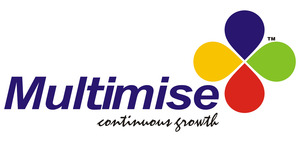HTML+JS+XML
HTML
-
HTML Basics
-
Format Text, Ordered Lists, Unordered Lists, Links, Graphics
-
Layout and Navigation
-
Tables, Frames, Navigation bars
-
Interactivity through forms
-
Advnaced Layout-Hover, rollover effects etc.
Java Script
-
Understanding Javascript
-
Fundamentals, Capabilites, Features, Advantages and Disadvantages
-
Learning Javascript Basics- Variables, Data Types, String Objects, Arrays, Functions
-
Decisions and Loopings
-
Objects
-
DOM,
-
Custom Objects
-
Events, Windows, Frames
-
Forms
-
Graphics, Animation, Cross Browser scripts, Style Sheets,
-
Dynamic Pages
-
Advanced DOM Features
-
Error Handling
-
Advanced Web Page
XML
-
Introduction
-
Well Formed XML,
-
XML Namespaces
-
XSD
-
XPATH
-
XSLT
-
XML-DOM
-
Web Services (Overview)
-
SOAP and WSDL (Overview)
Java Programing – Core Java – COURSE DURATION 35 HRS
-
What is Java?
-
Simple Java Program
-
Compiling and Interpreting Applications
-
The JDK Directory Structure
-
Datatypes (Primitive and Non-Primitive) and Variables
-
Literals ( Numeric, Char, String)
-
Arrays
-
Non-Primitive Datatypes
-
The Dot Operator
-
Operators and Expressions
-
Operator Precedence
-
Implicit Type Conversions
-
The Cast Operator
-
Control Flow Statements
-
Loops
-
The continue Statement
-
The break Statement
-
Methods
-
Object-Oriented Programming
-
Classes and Objects
-
Fields and Methods
-
Encapsulation
-
Access Control
-
Inheritance
-
Polymorphism
-
Best Practices
-
Objects and Classes
-
Defining a Class
-
Creating an Object
-
Instance Data and Class Data
-
Methods
-
Constructors
-
Access Modifiers
-
Encapsulation
-
Using Java Objects
-
Printing to the Console
-
printf Format Strings
COURSE DURATION – 35 HRS
JSP
-
Introduction
-
Overview of Java language and architecture
-
Java servlet architecture
-
How JSP simplifies the creation of servlets
-
Introducing servlets
-
How the Servlet API fits into Java EE
-
Servlet lifecycle
-
Obtaining configuration information
-
Deploying servlets
-
Overview of servlet containers
-
Types of servlet containers available
-
Deciding whether to select a basic servlet container versus a full-featured Java EE container
-
Tomcat as a popular, stable reference platform for servlets and JSP
-
The javax.servlet and javax.servlet.http packages
-
The HttpServlet class and how it extends GenericServlet
-
The HttpServletRequest interface and how it gives access to data received from the browser
-
The HttpServletResponse interface and how it is used to issue a response to the server
-
JSP Architecture
-
JSP Containers
-
Servlet Architecture
-
Page Translation
-
Types of JSP Content
-
Directives
-
Content Type
-
Buffering
-
Scripting Elements
-
JSP Expressions
-
Standard Actions
-
Custom Actions and JSTL
-
Objects and Scopes
-
Implicit Objects
-
JSP Lifecycle
-
Scripting Elements
-
Translation of Template Content
-
Scriptlets
JDBC
-
Re-Introducing JDBC
-
Review of JDBC architecture
-
Review of JDBC driver types
-
Discussion of evolution of JDBC from version 1.0 through 2.0 and 3.0
-
Database concepts review
-
Relational database terminology
-
SELECT, INSERT, UPDATE, and DELETE statements
-
Transactions, logging, isolation, and concurrency
-
Key JDBC classes and the java.sql package
-
DriverManager and DataSource
-
Connection
-
Statement, PreparedStatement, and CallableStatement
-
ResultSet
-
Extra features supported by the javax.sql package
-
Rowsets
-
Application development activities using the basic JDBC concepts
-
Building an interface for selecting records
-
Building a data-drilldown example
-
Building interfaces for inserting, updating, and deleting records
-
Connecting to databases
-
Selecting and installing a database driver
-
Connecting to the database via a network address
-
Connecting to the database based on information supplied by JNDI (the Java Naming and Directory Interface)
-
Using the java.sql.DataSource class
-
Increasing performance with connection pooling
-
Opening and closing the connection
-
Handling ClassNotFoundException and SQLException
-
Working with a database connection
-
Controlling transaction behavior
-
Using getWarning and clearWarnings to retrieve, respond to, and clear warnings
-
Creating statements, prepared statements, and callable statements
-
Retrieving and using database metadata
-
Ad-Hoc SQL queries with Statement and PreparedStatement
-
Creating a Statement object
-
Executing a SQL statement
-
Using executeQuery() for statements that return a ResultSet
EJB
-
Overview
-
Enterprise Applications
-
Containers and Objects
-
Three Containers
-
Remote Connectivity
-
Scalability and Availability
-
Security
-
Transaction Control
-
Architecture
-
What is an EJB?
-
Types of Beans
-
Inversion of Control
-
The Bean-Type Annotations
-
Dependency Injection
-
The @EJB Annotation
-
Development Cycle and Roles
-
Session Beans
-
Interface/Implementation Split
-
Stateful vs. Stateless
-
The @Stateless Annotation
-
Lifecycle and State Transitions
-
Session Context
-
The @Stateful Annotation
-
State Transitions
-
Singletons and Pools
-
Entities
-
The Java Persistence API
-
Persistence Annotations
-
Configuration by Exception
-
ORM Annotations
-
The EntityManager
-
Acquiring and Using the EntityManager
-
persistence.xml
-
@Enumerated and @Temporal Types
-
Associations
-
Associations, Cardinality, and Ownership
-
Annotations
Struts
-
Struts Architecture
-
MVC and Model 2
-
Command Pattern
-
Jakarta Struts
-
More XML, Less Java!
-
Action Mappings
-
JavaBeans in Struts
-
Working with Forms
-
Validation
-
Presentation Technology
-
Tiles
-
Action Mappings
-
Command Pattern for Web Applications
-
ActionServlet
-
Action and ActionMapping
-
Struts Configuration
-
Selecting a Forward
-
Global Forwards
-
Declarative Exception Handling
-
Global Exception Handlers
-
Forms
-
Working with HTML Forms
-
Action Forms a/k/a Form Beans
-
Relationship to Input
-
Relationship to Actions
-
Relationship to the Model
-
Relationship to Output
-
DynaActionForm and Map-Backed Forms
-
Validation
-
Coarse-Grained Form Beans
-
Struts Tag Libraries
-
Building View Components
-
Struts Tag Libraries
-
Attributes and Struts Expressions
-
Building Forms
-
<html:form>
-
<html:text> et. al.
-
Forms and Form Beans
-
Scope and Duration of Form Data
-
Managing Hyperlinks
-
Error Messages
-
Logic Tags
-
The JSP Standard Tag Library
-
JSTL Overview
-
JSP Expression Language
-
Core Tags
-
Formatting Tags
-
XML Tags
-
SQL Tags
-
Mixing JSTL, EL, Scripts and Actions
-
Indexed Properties and Struts HTML Forms
-
Internationalization and Localization
-
i18n in Java










